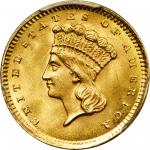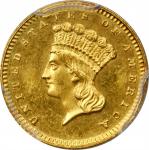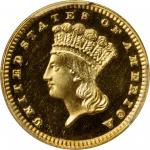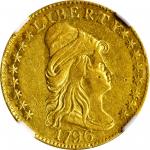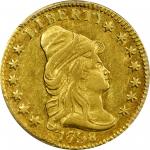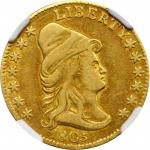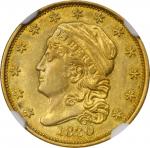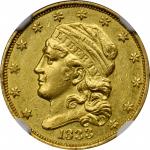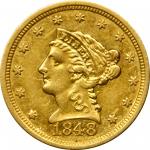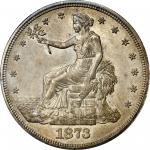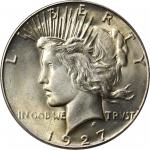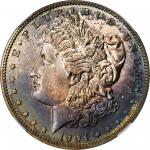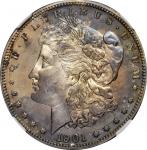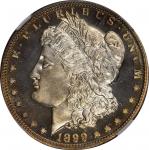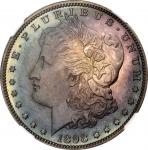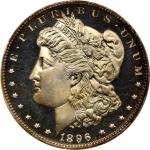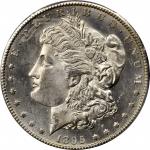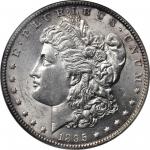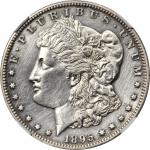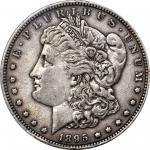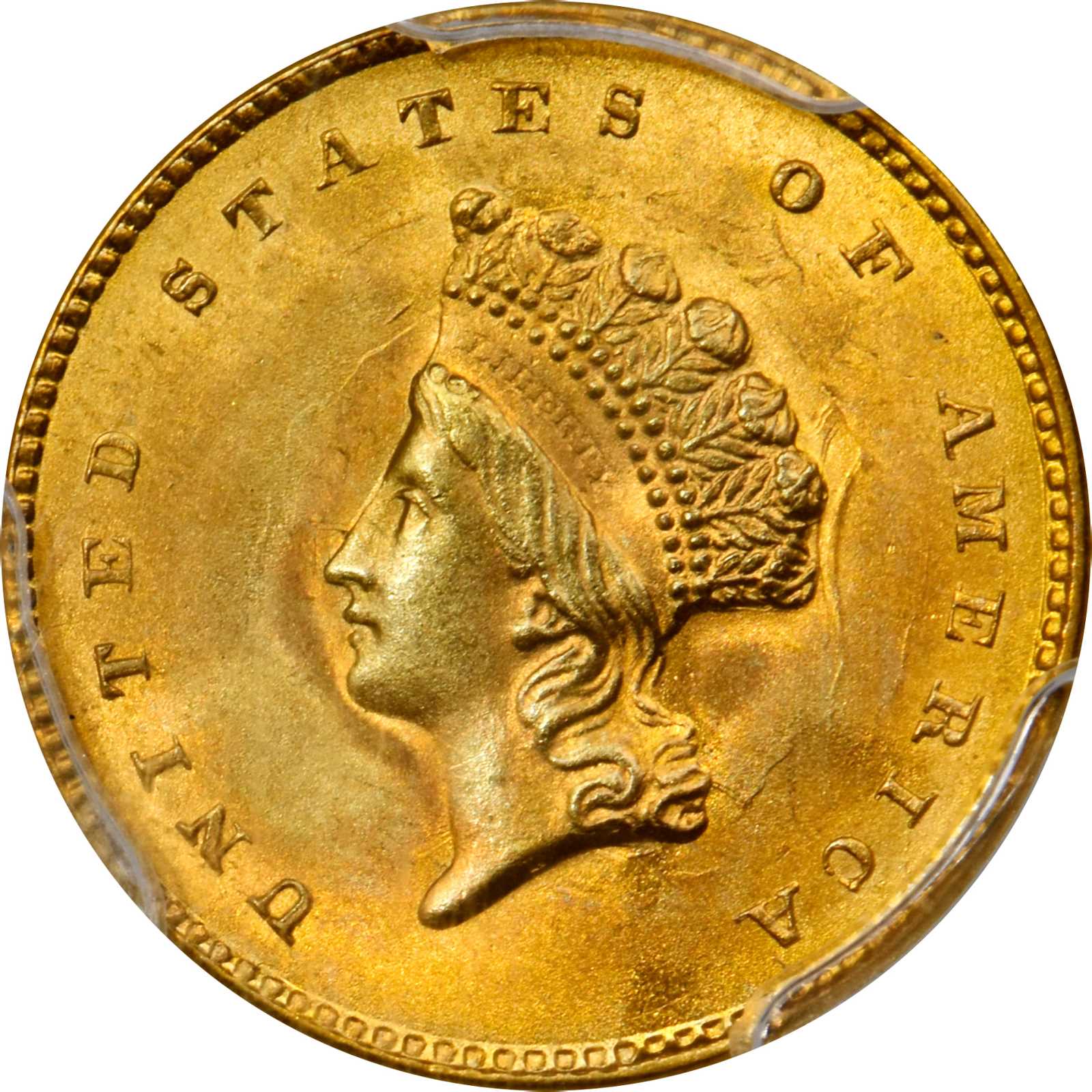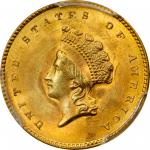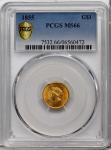1855 Gold Dollar. Type II. MS-66 (PCGS).A lovely specimen of this type with robust cartwheel luster that swirls in the light and immediately catches the eye. Fine satin frost is evident throughout the fields which exhibit rich, slightly mottled, orange and gold toning. Some of the higher points of the design have taken on a light steel tone and add to the visual contrast. Rather well struck with just a trace of softness at the upper half of the digit 8 in the date, but still much sharper than on some seen. The dies were clashed and the related artifacts, as well as fine peripheral die cracks, make for interesting study. There are just 13 grading records at PCGS in this grade, with only seven finer. However, it is fairly safe to assume that the actual number of different coins represented in these numbers is smaller due to resubmissions of some coins, and none has ever been graded more than a point higher than this one by either major grading service. A superb piece for the Registry Set collector or anyone seeking a high grade and high quality example of this type.<p>The Act of February 21, 1853, returned silver coinage to circulation in the East and Midwest by reducing the weight of the half dime, dime, quarter and half dollar to the point where their face value exceeded their bullion value. The coins were made subsidiary and were able to circulate freely in those areas for the first time since 1849. Mintages for all denominations from the half dime through the half dollar increased dramatically in 1853, with the Philadelphia Mint in particular churning out huge quantities of these coins. The effects on the gold dollar were significant and immediate, perhaps not surprising since the gold dollar was created in 1849 as a new denomination for coining California metal and also to help fill the void in commercial channels left by the withdrawal of silver.<p>With silver coins returning to circulation in large numbers, the need for the gold dollar diminished rapidly. Yearly mintages at the Philadelphia Mint tapered off and by 1858 and through the end of the decade that facility was producing fewer than 200,000 examples per year. (The mintage for the 1860 amounted to a mere 36,514 pieces.) Additionally, the gold dollars small size was an issue, but with few alternatives in circulation during the early 1850s, the public was accepting.<p>In 1854 Chief Engraver James Barton Longacre prepared a new design with an enlarged diameter of 15 millimeters, more convenient than the earlier size. The weight of the denomination remained unchanged, so the coins were made slightly thinner. Unfortunately, the design that Longacre chose, although aesthetically pleasing, was in too high relief for the thinner planchets, and most examples displayed poor definition in and around the centers. The dies often clashed early and frequently during press runs, and many survivors exhibit numerous pronounced clash marks on one or (usually) both sides. The Mint abandoned the new design after only three years of production, and in the third -- 1856 -- only the San Francisco Mint struck examples of this type.<p>Known in numismatic circles as the Type II gold dollar, mintages were generous only at the Philadelphia Mint in 1854 and 1855. The New Orleans and San Francisco mints achieved only modest deliveries in 1855 and 1856, respectively, while production at both the Charlotte and Dahlonega facilities in 1855 were extremely limited (the 1855-D, for example, has an original mintage of just 1,811 pieces). The 1854 and 1855 Philadelphia Mint issues are the obvious choices for representing this design in a gold type set and, indeed, examples are obtainable with ease in circulated grades. In lower Mint State grades the 1854 and 1855 issues are also plentiful, although the brevity of the type and its scarcity explains the premium enjoyed by these issues even in grades such as MS-61 and MS-62. The true rarity of the 1854 and 1855 Type II gold dollars emerges at and above the MS-65 level, where the striking problems combined with limited contemporary interest in preserving these coins explains the paucity of truly superb survivors.

